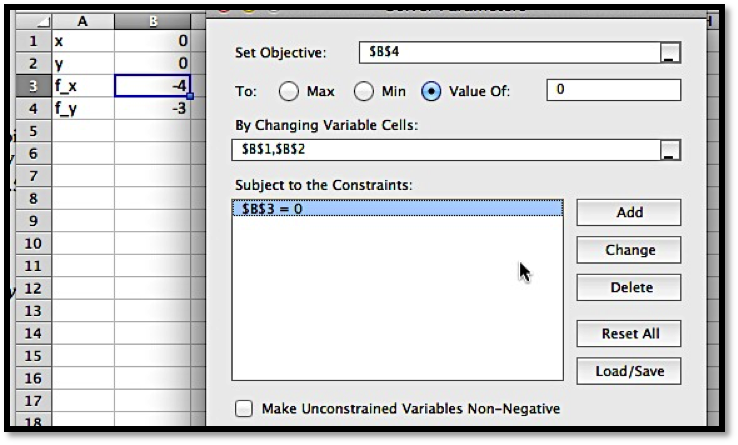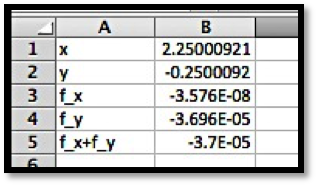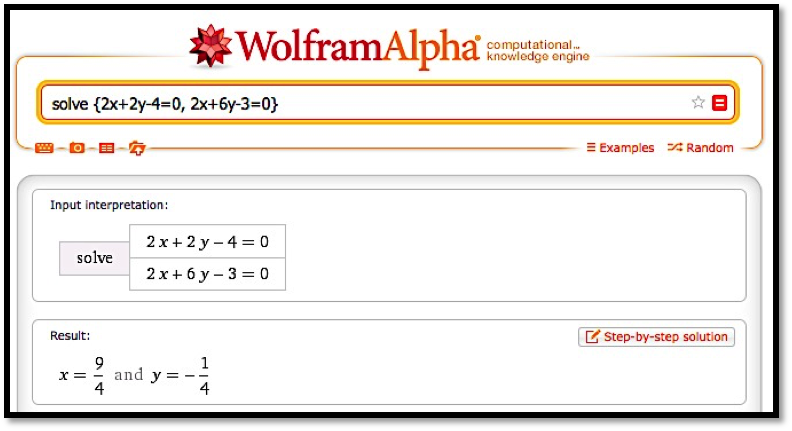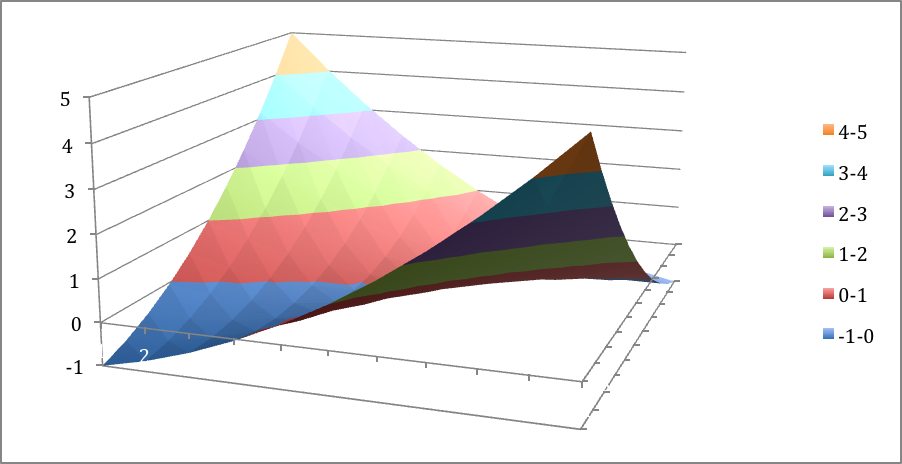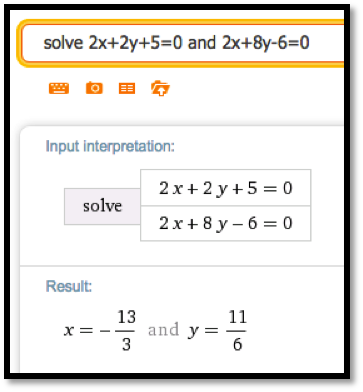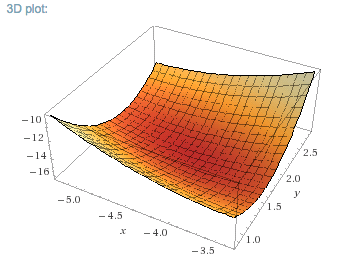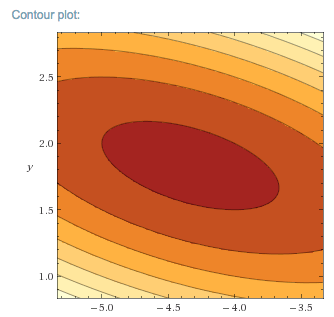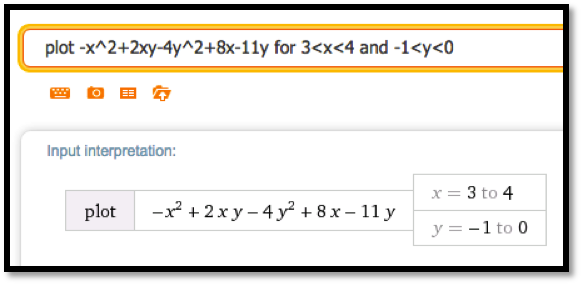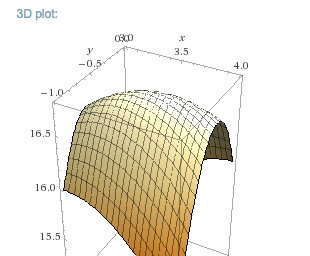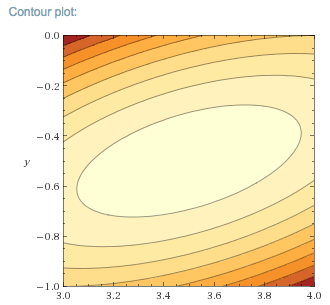We start by computing the first partial derivatives.
\begin{align*}
f_x \amp = 3x^2-3=3(x-1)(x+1)\\
f_y \amp = 3y^2-6y=3(y-2)(y)\text{.}
\end{align*}
Then we compute the second partial derivatives and the discriminant.
\begin{equation*}
f_{xx}=6x,\quad f_{xy}=0,\quad f_{yy}=6y-6,\quad D=(6x)(6y-6)-0^2=36xy-36x\text{.}
\end{equation*}
We have critical points when both first partials are 0, so at \((1,2)\text{,}\) \((-1,2)\text{,}\) \((1,0)\text{,}\) and \((-1,0)\text{.}\)
At \((1,2)\text{,}\) both \(D\) and \(f_{xx}\) are positive, so we have a local minimum.
At \((-1,2)\) and \((1,0)\text{,}\) \(D\) is negative, so we have a saddle point.
At \((-1,0)\text{,}\) \(D\) is positive and \(f_{xx}\) is negative, so we have a local maximum.

